Text
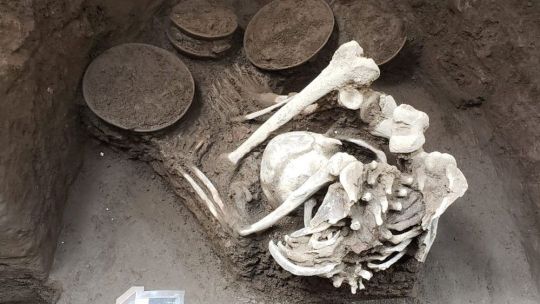
August 23, 2023
ARCHAEOLOGISTS UNCOVER TEOTIHUACANO VILLAGE IN MEXICO CITY
'Lost' 1,500-year-old Teotihuacan village discovered in the heart of Mexico City
1 note
·
View note
Text

December 10, 2022
Researchers Study the Remains of a Spider Monkey at Teotihuacan Given by the Maya
In 2018, archaeologists found the remains of a spider monkey gifted by the Maya to Teotihuacan in Teotihuacan’s early history. Research into the remains of the monkey using DNA, radiocarbon dating, and chemical study of the diet of the monkey, researchers have reconstructed the life and death of the monkey. Spider monkeys are not native to the Mexican highlands where Teotihuacan is located. The money was found in a complex that contained obsidian projectile points, conch shells, and precious stone artifacts, 14,000 ceramic shards from a grand feast, as well as a Maya mural depicting the spider monkey.
The monkey was brought as a gift to the elite at Teotihuacan by a Maya emissaries and the monkey was given a brutal live burial sacrifice send off. The research was published in Proceedings of the National Academy of Sciences (PNAS)
Science Alert has the report here;
https://www.sciencealert.com/ancient-bones-suggest-maya-befriended-neighbors-with-a-sacrificial-spider-monkey
0 notes
Text

October 21, 2022
INAH Finds 500 Obsidian Mine Shafts 31 Miles from Teotihuacan
INAH has uncovered 500 obsidian mine shafts 31 miles from Teotihuacan in the Sierra Nevadas. The obsidian was transported to Teotihuacan to workshops there. They have also found ceramic pieces and architecture with obsidian from the Teotihuacan era. Teotihuacan controlled the trade in obsidian from 100 to 600 CE. Obsidian was used in cutting, crafts, tools, rituals, and arrowhead weapons. The type of obsidian mined in these shafts was of the blue and green variety. Black and grey obsidian was used to make projectile points and knives. And in lapidary for gems.
These same mines were used bu the Toltecs and Aztecs between 950-1251 CE.
INAH has one of their great slide shows of this discovery here;https://www.inah.gob.mx/images/boletines/2022/473/index.html#foto8.jpg
And Ancient Origins has the report here with many photos;
https://www.ancient-origins.net/news-history-archaeology/teotihuacan-obsidian-mines-0017335
0 notes
Text
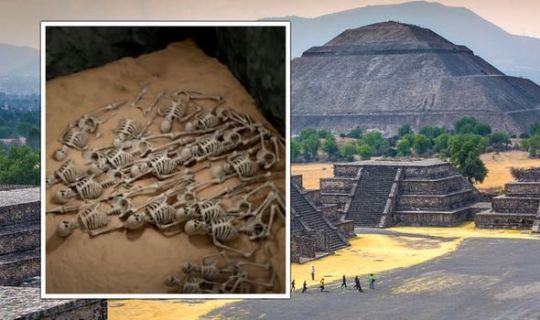
January 15, 2022
AN UPDATE ON THE MASS GRAVE UNDER THE PYRAMID 0F THE SUN
Archaeologist Sergio Gomez uncovered the tunnel under the Pyramid of the Sun in 2017. Among other finds, he uncovered 20 human skeletons arranged in a symbolic pattern. Another 260 bodies were found to be built unto the fabric and foundation of the building. They may have been sacrificed to the gods, or simply died of natural causes. Gómez and his team had to remove 1,000 tonnes of soil in order to access the tunnels.
They believe the Aztecs likely deposited the dirt as a way to seal off any access points. This meant that most of the artifacts found were largely undamaged and untouched by robbers. His team found more than 100,000 objects along the tunnel, The artefacts included a greenstone crocodile teeth, crystals shaped into eyes, as well as sculptures of jaguars.
And, the tunnel itself was lined in iron pyrite, it reacted to any light by shimmering like the night sky, a reaction likely purposefully induced by the Aztecs in order to replicate the stars.
Express.com has the update here https://www.express.co.uk/news/science/1547202/aztec-breakthrough-dark-secret-mexico-central-america-teotihuacan-pyramid-spt
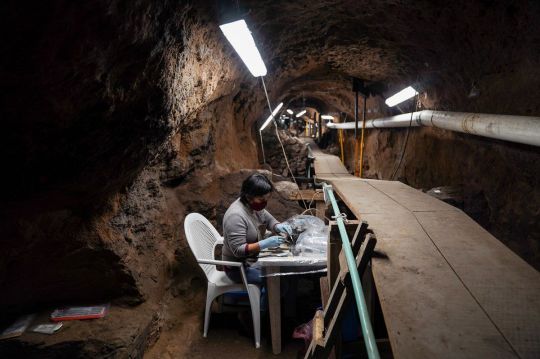
September 29, 2021
An Update on the Tunnel Underneath the Pyramid of the Plumed Serpent at Teotihuacan
100,000 artifacts have been uncovered from a tunnel beneath the Temple of the Plumed Serpent at Teotihuacan. Archaeologist Sergio Gomez has found statues, jewelry, shells, ceramics, wooden and metallic objects
Over 100,000 artifacts from the tunnel have been cataloged so far, ranging from finely-carved statues, jewelry, shells, and ceramics as well as thousands of wooden and metallic objects that mostly survived the passage of time intact. Gomez and his large team continues to work in the 330 feet tunnel, which ends in three chambers which end at the mid-point of the pyramid above.
Recently, they found a tennis ball sized amber sphere with a residue that may be tobacco. It could have been a necklace for a priest. Priests took hallucinogenic plants and mushrooms before they entered the tunnel. The walls and floors were coated with iron pyrite. The tunnel could have been built to re-create the underworld to initiate new rulers. The tunnel was used from 50 CE-250 CE.
Gomez found 17 layers of shells laid down by priests. Bits of human hair and skin have been uncovered. The tunnel is filled with gifts to the lords of the underworld and to the Storm God. Several dozen black jars sculpted to resemble the Storm God have recently been found. Thousands of pieces of iron pyrite imported from as far away as Honduras, imperial jade
Among the offerings are hundreds of objects made of so-called imperial jade, one of the world’s most expensive gems, including ear spools, necklaces and pendants - one in the form of a crocodile 8,000 wooden objects - plates, bowls and more - were unearthed, as well as the skulls and claws of some three dozen animal species, especially predators like jaguars and pumas.
Gomez’s team is developing three-dimensional digital recreations of the artifacts as they originally would have appeared, so they can eventually be accessed online.
In late July, they found a circular pit, where priests had tossed four bunches of flowers. On top, they placed a heap of wood, handfuls of corn, chile, and nopal seeds, plus a miniature stone carved pyramid.
Finally, they set it all on fire.
Thanks to the charred wood, Gomez will soon be able to pinpoint the year the smoky ritual took place.
The flowers were unprecedented, the first time intact plant remains have been found at Teotihuacan.
Reuters has the story here:
https://www.reuters.com/world/americas/below-pyramid-treasure-trove-sheds-new-light-ancient-mexican-rites-2021-09-01/

September 29, 2021
New LIDAR Discoveries at Teotihuacan
Nawa Sugiyama, from the University of California, Riverside, has found hidden traces of the early phases of Teotihuacan going back to its earliest phases of construction at 1,500 years ago. LIDAR has revealed rerouted rivers and built canals to align with astronomical points. 65% of urban areas in the region here aligned at 15 degrees east of astronomical north. Teotihuacan was constructed in this alignment.
298 features and 5,795 human-made terraces were unearthed By LIDAR and more than 200 features that once existed have since been destroyed by mining activities. But LIDAR has uncovered these features.
The research has been published in PLOS One.
Express.UK has the report here:
https://www.express.co.uk/news/science/1495009/archaeology-breakthrough-mexico-city-teotihuacan-university-california-riverside-pyramids
2 notes
·
View notes
Text
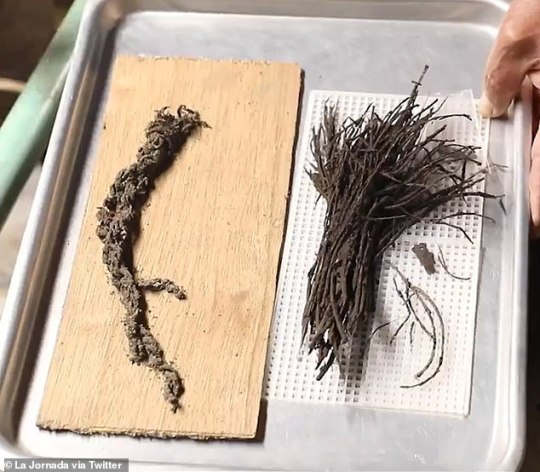
August 14, 2021
Important Discovery at Teotihuacan
Four bouquets of ancient flowers have been found 59 feet below the Temple of Quetzalcoatl at Teotihucan. These are the first ancient botanical artifacts found at Teotihuacan. They are amazingly preserved and still tied together by cotton strings.
Sergio Gomez and his team have also found ceramics in the tunnel below the Temple from various phases of Teotihuacan history during this excavation. They have not removed the bouquets to preserve the humidity and conditions in the tunnel that preserved these flowers. They also found many kilos of charcoal that were the remains of ritual ceremonies which involved the burning of seeds and fruits.
They have found a censor with a slope and board, but have not provided a photo.
Gomez and his team have found 100,000 objects including ceramics, obsidian, shells, snails, rubber, hair, big cats and birds remains. They have also found a half a kilo of cocoa beans in good condition at the end of the tunnel, imported from Maya realms.
La Jornada has the report here (in Spanish) with a video.
https://www.dailymail.co.uk/sciencetech/article-9891095/Bouquets-flowers-left-offerings-gods-1800-years-ago-Teotihuacan-pyramid.html
Daily Mail has some photos here:
https://www.dailymail.co.uk/sciencetech/article-9891095/Bouquets-flowers-left-offerings-gods-1800-years-ago-Teotihuacan-pyramid.html
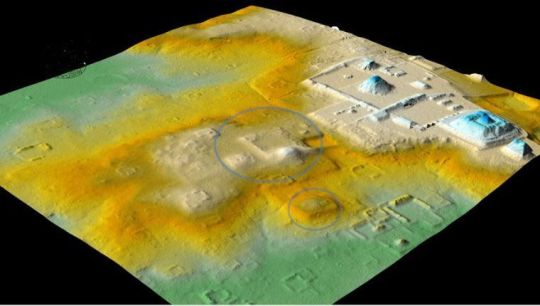
April 30, 2021
Teotihuacan Diplomatic Compound Discovered at the Maya Site of Tikal
Archaeologists at the Maya site of Tikal have found buildings and artifacts that appear to be an outpost of Teotihuacan, 600 miles away. The structures were made of earth and stucco that the Maya did not use. Weapons of green obsidian from the area of Teotihuacan, carvings of the Teotihuacan rain god and a Teotihuacan type burial were found. Teotihuacan dignitaries may have lived there during a time of peace before warfare between them began. The area looks too have been built at 300 CE. Teotihuacan conquered Tikal at 378 CE.
On January 15378 CE, a man by the name of Sihyaj K’ahk’, or Fire is Born, into the city on January 16, 378, and on that same day, the Tikal leader Jaguar Paw died. The Teotihuacan army was sent by the Two leader Spearthrower Owl. His son became king of Tikal. He wears a Too headdress and a Two spear in portraits.
Maya murals at Teotihuacan were destroyed and buried at 350-450 CE, perhaps from a Tikal diplomatic compound there.
The compound at Tikal were located by LIDAR, and excavations in this area will continue.
Smithsonian has the report here:
https://www.smithsonianmag.com/smart-news/were-these-ancient-mesoamerican-cities-friends-they-became-foes-180977509/
0 notes
Text

March 31, 2020
Exciting New Research on Teotihuacan/Maya Events at Tikal
On January 16, 378 CE, Sihyaj K’ahk’ (SEE-yah Kak), or Fire is Born entered Tikal in Guatemala. He may have been from Teotihuacan and may have entered with an army. Maya monuments at the site record the event. Chak Tok Ich’aak, or Jaguar Paw, the long-reigning king of Tikal, died on the day he arrived. He may have been sent by Spearthrower Owl whose son became king of Tikal within 2 years. His name was Yax Nuun Ayiin, He has a Teotihuacan style atlatl and headdress, and the images of him and his father at Tikal are drawn in a Teo style. Tikal became very powerful thereafter.
There is controversy about these interpretations. The new rulers may have been Maya royalty who adopted Teo symbolism.
A team of archaeologists have uncovered the evidence of a giant feast dated at 300-350 CE, They have excavated so far 10,000 ceramic pieces and an additional 250 pieces are excavated each day. They believe Maya and Teotihuacano guests were at the feast together, The team has excavated a compound of buildings with vivid murals. Perhaps the Teotihuacano guests were diplomats and nobles sent to cement royal marriages and alliances. Decades after the feast, the murals were smashed and buried. Faces were obliterated. This destruction took place at 350-400 CE.
Nearby, a mass burial has been found, the bodies in pieces. Some skulls have flat backs and dental jewelry that are Maya in style. DNA and dietary isotopes will be taken to see if these are Maya people. The bones were dumped in the burial pit at the time of the feast.
There is evidence that the new ruler at Tikal expanded his influence over a wide area. Teo style murals show up at Holmul 25 miles away. Friendly kings were established at many Maya cities. But there is little evidence of Teo people living at Tikal. Sihyaj K’ahk may have been a Maya usurper using the Teotihuacan attire and symbolism to enhance his power. Isotopic analysis shows he grew up near Tikal. Other archaeologists are looking for real evidence of a Teotihuacan conquest. LIDAR has found possible fortifications with watch towers nearby Tikal. Excavations of these sites will begin in May. They may find whether these places were built by the Teotihuacanos or the Maya.
The detailed report on this new and exciting research is published in Science magazine with photos;
https://www.sciencemag.org/news/2020/02/astounding-new-finds-suggest-ancient-empire-may-be-hiding-plain-sight
Mike Ruggeri’s Ancient Maya News on WordPress
https://mikeruggerismaya.news.blog
Mike Ruggeri’s Teotihuacan World on Word Press
https://mikeruggeristeotihuacanworld.home.blog
1 note
·
View note
Text

June 17, 2019
Earliest Maya Entry Into Teotihuacan Uncovered
INAH has revealed new research concerning the entry of the Maya into Teotihuacan, at a conference in Mexico City, headed by renowned University of Arizona Teotihuacan archaeologist Saburo Sugiyama. 2,400 remains of human skeletons, disjointed, and dismembered, were found at one end of Plaza 50 in the Plaza of the Columns at Teotihuacan. Most were adults, most had cuts and some had their bones carved as tools. Sharpened teeth with dental implants were found.Three skulls were cranially deformed. The dental and skull mutilations are in the Maya style.
A second offering may be the remains of a great celebration. 3,500 bones have been found there, mostly animal bones, and 10,000 ceramic sherds, probably smashed as part of a ritual. 68% were Teotihuacan bowls but many are of Maya design. The banquet was mainly rabbit and quail. Cassava and tobacco are present coming from distant lands.
Wall fragments with Maya style murals have also been found at Plaza 50. They were also ritually destroyed. 1000 of these fragments are being restored and scanned.
Artifacts in the northern mound recovered last summer contained marine elements and sacrificed animals.
95 obsidian objects including projectile points and prismatic blades made at Teotihuacan, and 50 greenstones and 50 marine objects included snails.
A golden eagle that had eaten a rabbit, a puma skull, rattlesnakes and the spider monkey not native to the central highlands were among the sacrificed animals.
Radicarbon dating have been divided into two periods. The first period was between 300-350 CE and a later period, when the Maya murals appear dated at 350-450 CE.
Sugiyama pointed out that 350 CE was the date that three Maya elite individuals were sacrificed at the Pyramid of the Moon. And the Maya murals are in line with the Teotihuacan entry into Tikal at 378 CE.
INAH has the report here (in Spanish) (click on the tiny camera icon for a slide show)
https://www.inah.gob.mx/boletines/8195-nuevos-hallazgos-en-teotihuacan-revelan-relacion-con-mayas-entre-350-y-450-d-c
Mike Ruggeri’s Teotihuacan
http://mikeruggeristeotihuacan.tumblr.com
Mike Ruggeri's Teotihuacan; City of the Gods Magazine
http://bit.ly/1z57bpL
1 note
·
View note
Text

July 5, 2017
INAH Finds a Possible Tunnel Under the Pyramid of the Moon
INAH has found another possible tunnel underneath the Pyramid of the Moon. It was found by electrical resistivity tomography. The tunnel appears to go from the center of the Moon plaza to the pyramid. This would mirror the tunnels beneath the Pyramid of the Sun and the Temple of Quetzalcoatl. The tunnels equate to the idea of Teotihuacan being related to the underworld and to agricultural fertility.
There are indications there may be other underground sites under the same pyramid. INAH will move to excavate the tunnel. This kind of excavation takes years of slow careful work.
INAH has the best report (in Spanish) of this discovery;
http://www.inah.gob.mx/es/boletines/6309-especialistas-del-inah-localizan-posible-tunel-bajo-la-plaza-y-piramide-de-la-luna-en-teotihuacan
2 notes
·
View notes
Text

April 24, 2017
Teotihuacan Tomb Search Comes to An End
Archaeologists have been working on tunnels under the Pyramid of the Feathered Serpent at Teotihuacan for eight years. They have been looking for a tomb of an important ruler at Teotihuacan. But no such tomb has been found. In 2015, a treasure trove of artifacts were found in a secret tunnel and beds of Mercury that had to have been brought to the tunnel to simulate an underground river. The earth in this spot had been sculpted into miniature landscapes of mountains and valleys as well.
The tunnel was sealed at 250 CE and re-entered at 530 CE. A large object was dragged out of the tunnel at that point. Was it a tomb? 100,000 artifacts have been found there, including four adorned greenstone figurines, three women and one man, near the tunnel entrances. Conch shells from the Gulf Coast, Pacific, and Caribbean were found, some with carved Maya glyphs, jade ornaments from Guatemala, rubber balls, ceramics pots from neighbouring states, and animal bones from migratory birds, jaguars and even a bear.
The Guardian has the story here with photos;
https://www.theguardian.com/science/2017/apr/24/mexicos-ancient-city-guards-its-secrets-but-excavation-reveals-new-mysteries
Mike Ruggeri’s Teotihuacan
http://mikeruggeristeotihuacan.tumblr.com
Mike Ruggeri's Teotihuacan; City of the Gods Magazine
http://bit.ly/1z57bpL
Earlier stories I posted on this topic;
Liquid mercury found under Mexican pyramid could lead to king’s tomb
http://www.theguardian.com/world/2015/apr/24/liquid-mercury-mexican-pyramid-teotihuacan
50,000 sacred objects from stone sculptures to shells found in ancient Mexican tunnel - and archaeologists say they could lead to royal tombs
http://www.dailymail.co.uk/sciencetech/article-2813097/Filled-artifacts-ancient-Mexican-tunnel-lead-royal-tombs.html
1 note
·
View note
Text

August 17, 2016
Teotihuacan May Have Bred Rabbits for Animal Husbandry
Researchers at Teotihuacan may have bred rabbits and hares for food, fur and bone tools. Large mammals suitable for animal husbandry did not exist at Teotihuacan. So the researchers studied the remains of 134 rabbits at Teotihuacan using stable carbon and oxygen isotope analysis. They found that the rabbits had a higher level of maize and other human crops in their diet than wild rabbits. The research is published in the peer reviewed journal PLOS ONE.
Somerville AD, Sugiyama N, Manzanilla LR, Schoeninger MJ (2016) Animal Management at the Ancient Metropolis of Teotihuacan, Mexico: Stable Isotope Analysis of Leporid (Cottontail and Jackrabbit) Bone Mineral.
EurekAlert has the report here;
http://www.eurekalert.org/pub_releases/2016-08/p-pmc081116.php
Mike Ruggeri’s Teotihuacan
http://mikeruggeristeotihuacan.tumblr.com
Mike Ruggeri's Teotihuacan; City of the Gods Magazine
http://bit.ly/1z57bpL
1 note
·
View note
Text

July 8, 2016
INAH Uncovers Elite Female Burial Near Teotihuacan
INAH archaeologists have uncovered the skeleton of an upper class women with intentional cranial deformation (a practice often reserved for upper class people in Mesoamerica). Her teeth are encrusted with mineral stones as a form of dental jewelry. The jewels are foreign to the region. She has a lower tooth made of serpentine, and pyrite stones encrusted in two top teeth. The cranial deformation and dental jewelry is in the style of southern Mesoamerica, perhaps Maya in style. The skeleton was found in a town near Teotihuacan. She was 35-40 years old at death. She was buried with 19 jars. The date of her burial is at 400 CE.
The Daily Mail has the report here with their usual great photo collection of the find.
http://dailym.ai/29wzQS5
Ancient Origins has a video of the find, (in Spanish) now called the “The Woman of Tlailotlacan”
http://bit.ly/29AyiH5
Mike Ruggeri’s Teotihuacan
http://mikeruggeristeotihuacan.tumblr.com
Mike Ruggeri's Teotihuacan; City of the Gods Magazine
http://bit.ly/1z57bpL
0 notes
Text

May 8, 2016
Exciting Finds at the Pyramid of the Moon, Teotihuacan
INAH is excavating under the Pyramid of the Moon at Teotihuacan. They uncovered holes with green stone stelae inside them. They found passages that show the Mesoamerican symbol of the center of the cosmos with the four corners of the universe, the “quincunx.” River stones were also present. They have also found many more modifications of the pyramid in ancient times. They have found the evidence of a plaza bordered by 13 bases. Five stelae have been unocovered so far. The green stone of the stelae appears to be from Puebla. The dating on these holes are from early Teotihuacan, 100 CE. The link to green stones and water deities is strengthened here. Atop the pyramid was the statue of the goddess of fertility Chalchuitlicue (my note; which many have mistakenly identified as Tlaloc. This would also be the reason for the presence of river stones, since Chalchuitlicue was also the goddess of running water). Two canals have also been found that would have been symbolic for running water.
Ancient Origins has the report here with good photos and a video of the finds.
http://bit.ly/1UKFyRj
The original INAH report in Spanish is here with a slide show (click on the camera icon at the top).
http://bit.ly/1VPvp78
Mike Ruggeri’s Teotihuacan
http://mikeruggeristeotihuacan.tumblr.com
Mike Ruggeri's Teotihuacan; City of the Gods Magazine
http://bit.ly/1z57bpL
Mike Ruggeri's Teotihuacan Art Portfolio
http://goo.gl/riSg2
0 notes
Text
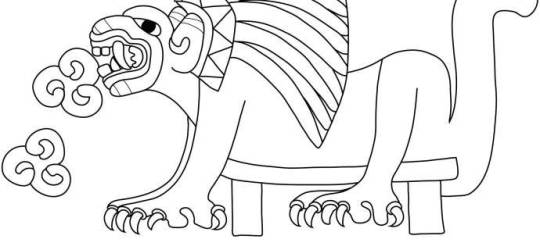
December 19, 2015
New Research on Animal Remains at Teotihuacan
Researchers have found the remains of 194 animals sacrificed at Teotihuacan in the Pyramid of the Sun and the Temple of Quetzalcoatl. The remains were of wolves, eagles, jaguars and pumas. Stress and infection traces have been found that are indicative of animals held in captivity. Isotope analysis also shows the animals were fed maize. The pumas in captivity may have eaten humans as part of ritual sacrifice.
More information: Nawa Sugiyama et al. Stable Isotopes and Zooarchaeology at Teotihuacan, Mexico Reveal Earliest Evidence of Wild Carnivore Management in Mesoamerica, PLOS ONE (2015). DOI: 10.1371/journal.pone.0135635
PhysOrg has ther report here on the PLOS ONE research
http://phys.org/news/2015-12-early-captive-carnivore-ancient-mexican.html
Mike Ruggeri’s Teotihuacan
http://mikeruggeristeotihuacan.tumblr.com
Mike Ruggeri's Teotihuacan; City of the Gods Magazine
http://bit.ly/1z57bpL
0 notes
Text

August 7, 2015
New DNA research at Teotihuacan
Archaeologists are studying the DNA found in the remains of people buried at the Teotihuacan neighborhood of Teopancazco to determine the ethnic mixture there. They recovered mtDNA from 29 individuals. They found that Haplogroups A, B, C, and D were present in the population from the beginning. So the Teopanzaco population was mixed genetically since its founding. Some males were decapitated and have been considered foreigners. The researchers compared the DNA to groups from the Gulf Coast, Oaxaca and the Maya area. The population in the initial phase (200-350 CE) was mostly local and people from the Gulf Coast. As trade expanded, the population became more diverse. They studied seven female and 5 male infants to look for child sacrifice clues. The male infants showed more genetic diversity. This finding may lead to a better understanding of child sacrifice at Teotihuacan.
For more information, or to read the open-access article, see: Álvarez-Sandoval BA, Manzanilla LR, González-Ruiz M, Malgosa A, Montiel R (2015) Genetic Evidence Supports the Multiethnic Character of Teopancazco, a Neighborhood Center of Teotihuacan, Mexico (AD 200-600). PLoS ONE 10(7): e0132371. doi:10.1371/journal.pone.0132371.
Forbes has the report here;
http://www.forbes.com/sites/kristinakillgrove/2015/08/07/teotihuacan-had-one-of-ancient-mexicos-most-diverse-neighborhoods-dna-shows/
0 notes
Text

April 24, 2015
New Mysterious Finds in Teotihuacan Tunnel
INAH archaeologist Sergio Gomez has found a surprise at the tunnel underneath Teotihuacan’s Pyrmaid of the Plumed Serpent. They have found a large quantity of mercury at the end of the tunnel sealed for 1,800 years. Maybe it was placed there as a symbolic underworld river or lake. Merecury has been found at a few Maya sites. They are still very slowly tunneling to three chambers which may hold the resting place of an elusive Teotihuacan king. Gomez has been excavating there for 6 years, and is slowed by humidity, mud, and now potential mercury poisoning. Linda Manzanilla doubts there was ever a single king, but a ruling council, given the lack of a single palace or depictions of kings in any Teo murals. The excavation should be complete by October.
Business Insider has the story here, and more reports of this find will be popping up online.
http://www.businessinsider.com/r-hunt-for-ancient-royal-tomb-in-mexico-takes-mercurial-twist-2015-4
0 notes
Text

March 17, 2015
The End of Teotihuacan
Linda Manzanilla, who has been one of the principle archaeologists at Teotihuacan for decades, has been studying the Teotihuacan neighborhood of Teopancazco. She studied excavated individuals for measurements of activity markers, nutritional patterns and status, isotopes, and ancient DNA. Groups with different backgrounds settled on the margins of the city. Elites in the city core controlled the trade in pigments, cosmetics, slate, greenstone, travertine, and foreign pottery, and acquired workers foreign cultures to perform specialized tasks. Tensions between the leaders of Teotihuacan and the competitive intermediate elites grew. These tensions resulted in revolt and the destruction of Teotihuacan in 550 CE. No foreign invasion traces have been found at the site at this time. The state may have tried to intervene to quell the tensions leading to the final revolt, the burning of the city, and the shattering of elite residences. The society was too fractured and complex to survive these tensions. The report is published in the Proceedings of the National Academy of Sciences.
Popular Archaeology has the report here;
http://popular-archaeology.com/issue/spring-2015/article/ancients-set-stage-for-collapse-of-teotihuacan
4 notes
·
View notes
Text

November 21, 2014
Groundbreaking Teotihuacan Mask Findings
New electron research into Teotihuacan masks reveals surprising proof that the iconic stone masks were made far from Teotihuacan and from materials that were not really jadeite. Researchers studied 150 of the 600 masks held in museums around the world. They found they were made from serpentine, travertine and limestone, and other softer stones and polished with quartz, which does not exist at Teotihuacan. They found 3 fakes among them. They now believe the masks were made by artisans in Puebla and carried to Teotihuacan. They were also able to source the microscopic remains of algae on the masks to identify their Puebla region origins.
Scientific American has the report here;
http://www.scientificamerican.com/article/electron-beam-points-to-origins-of-teotihuacan-stone-faces/
0 notes